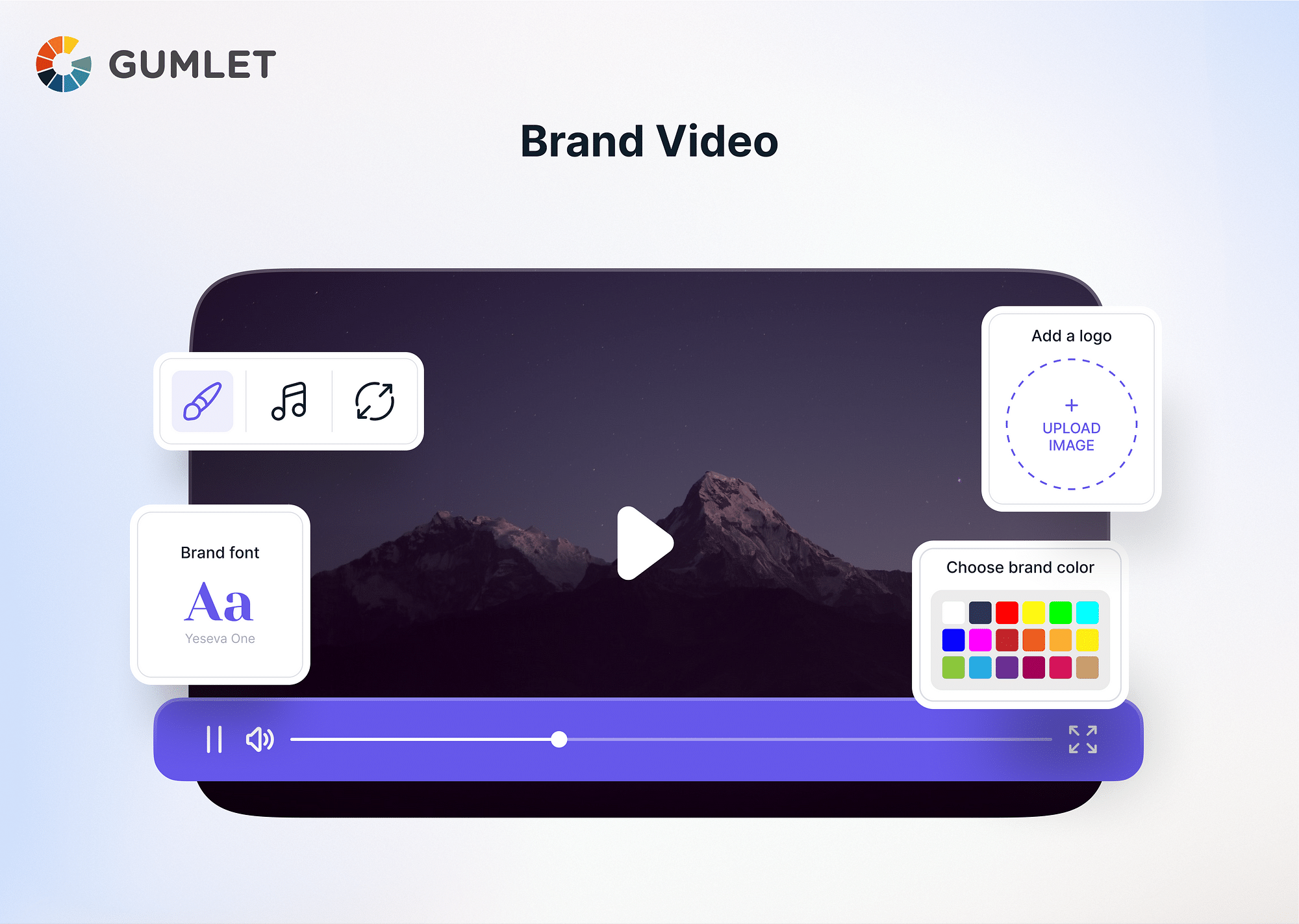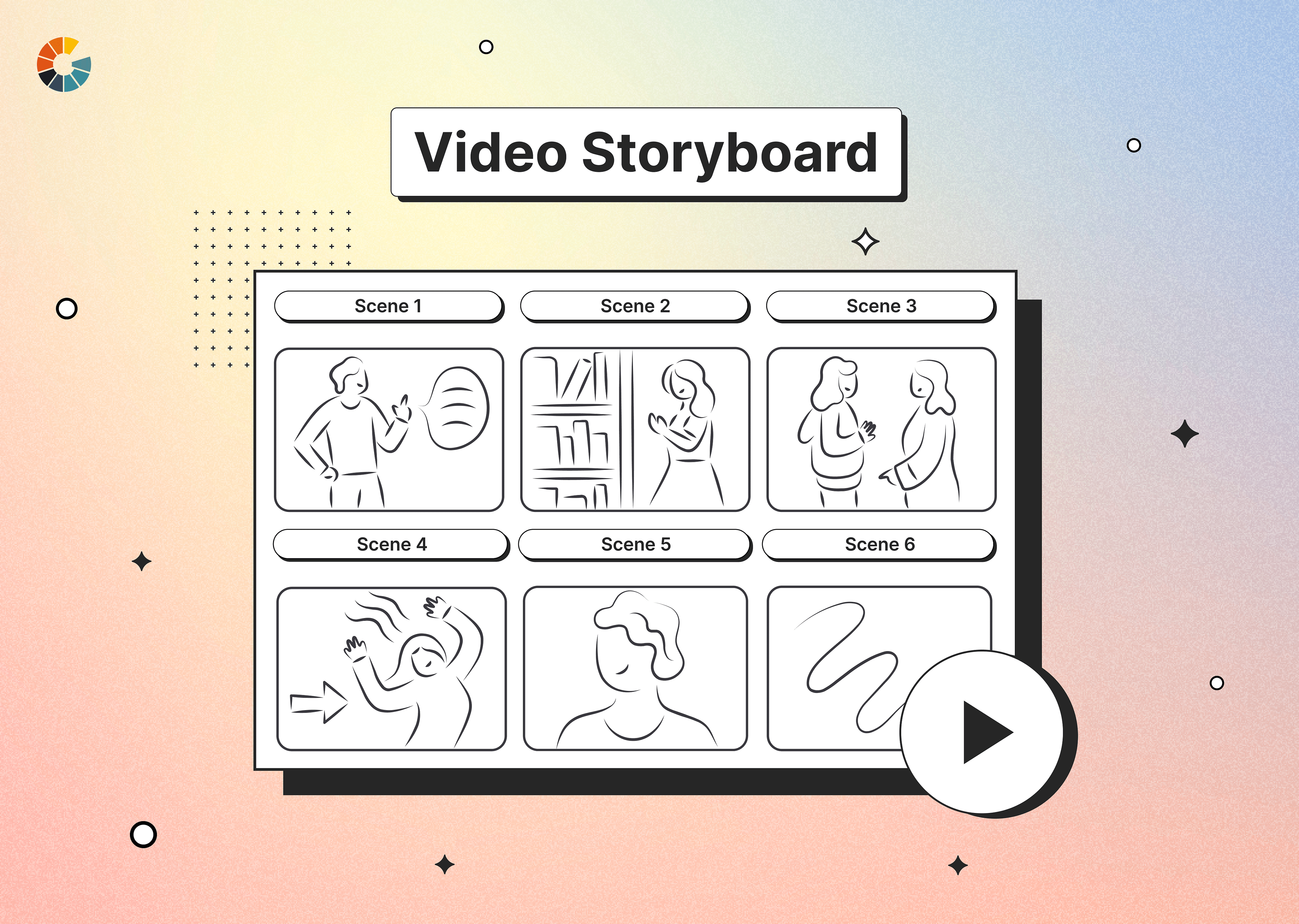A fusion of storytelling, visual aesthetics, and strategic messaging, brand videos have carved their niche in shaping the perception of businesses. This article delves deep into the essence of brand videos, revealing why they are not just beneficial but crucial for the growth and success of your small business.
What is a Brand Video?
A brand video is a visual representation that showcases a company's mission, values, products, and personality. It is a cornerstone for brand messaging designed to evoke emotion and resonate with viewers.
Schedule a Demo with Our Video Expert!
Discover how Gumlet can help you build a cutting-edge video streaming infrastructure.
Types of Branding Videos
In the vast world of video marketing, understanding the different kinds of branding videos is essential. Each type serves a unique purpose and targets specific facets of a brand's persona and marketing goals. Whether it's showcasing a product, conveying company values, or building trust, there's a video style designed to achieve it. Below, we shed light on some of the primary types of branding videos and what each brings to the table.

- Product Videos: They showcase the features and benefits of your product.
- Company Culture Videos: They offer a peek into the company's ethos and values.
- How-to Videos: They demonstrate how a product or service works.
- Customer Testimonials: They are real stories from satisfied customers.
- Behind-the-scenes Videos: Authentic glimpse into the workings of a company.
Why are branding videos essential for your business?
In an era dominated by visual storytelling, businesses constantly seek ways to connect more profoundly with their target audience. While written content and static images hold their value, the dynamic nature of videos has positioned them at the forefront of effective marketing strategies.
Let's delve into their myriad benefits and why they're a game-changer in the branding world.
- Building a Strong Brand Identity: Brand identity is the collective perception of a brand's visual and emotional elements, such as its logo, design, and the emotions it evokes. Video branding allows a business to communicate its brand identity more effectively. By using video, a company can seamlessly intertwine visuals, narratives, and emotions to accentuate its brand values.
- Engaging and Connecting with Your Audience: Video content can capture and sustain viewers' attention. When executed correctly, brand videos can tell a story that resonates emotionally with the viewer. This emotional connection enhances brand loyalty and deepens the bond between a business and its audience.
- Differentiating Your Small Business: In a saturated market, standing out is paramount. Video branding offers the chance to narrate a unique story that sets a business apart from its competitors. The art of video storytelling and visually compelling content create a brand image in the viewer's mind.
- Building Trust and Credibility: Trust and credibility are foundational for any successful business. Videos, particularly customer testimonials and behind-the-scenes content, provide an authentic perspective of a brand. These videos offer transparency and allow viewers to relate, thereby bolstering the brand's credibility.
- Boosting Online Visibility and Reach: With video content dominating online algorithms, integrating brand videos into your marketing strategy can exponentially boost online visibility. It's a powerful tool to expand reach and attract a wider audience.
Best Tips to Make Your Branded Video Stand Out
In a digital landscape flooded with content, making a lasting impression becomes challenging, even for the most seasoned marketers. Branded videos, while powerful, compete for attention amidst a sea of visuals, stories, and promotions. How can you ensure that your video doesn’t just become another blip on a user's screen but rather leaves an indelible mark? Let’s look at some tried-and-true tips for the same:
- Tell a compelling story: We're hardwired to love stories. Narratives that evoke emotion and your brand message will ensure viewers are engaged from start to finish.
- Prioritize high-quality production: While content is king, quality is its crown. Ensure clear visuals and crisp sound to reflect professionalism and attention to detail.
- Incorporate customer feedback: Integrating real-life experiences or testimonials lends credibility to your video and showcases the tangible benefits of your product or service.
- Leverage the Power of Social Media: Adjust your video format and content based on the platform's nuances. For instance, a fast-paced, catchy video might work on TikTok, while a more in-depth explainer video could be suited for YouTube.
- Maintain consistent branding: From color schemes to voiceovers, ensure that your video aligns with your brand's guidelines. This reinforces brand recognition and establishes a coherent brand image across platforms.
- Utilize animations and graphics: Infographics, animations, and dynamic text can make your video more engaging, helping to explain complex topics in a digestible manner.
- Engage with a strong CTA: End your video by guiding viewers on the next steps, whether it's visiting your website, signing up for a newsletter, or checking out a new product.
- Test and optimize: Use A/B testing to determine what works best for your audience. Alter titles, thumbnails, or even content based on feedback and engagement metrics.
Remember, the key lies in striking the right balance between promoting your brand's message and offering value to the viewer.
Hosting Videos with Gumlet
Gumlet ensures optimal video delivery and user experience, adapting video quality based on user bandwidth. Additionally, its detailed analytics provide insights to understand viewer behavior and improve content strategy.
Our Favorite Successful Video Branding Examples
In the vast realm of video marketing, several brands have excelled and set benchmarks, showcasing the boundless potential of video branding when done right. These brands have managed to encapsulate their essence, values, and narratives in videos, forming deep and enduring connections with their audiences. Let's delve into how some of the giants created riveting video content and the key takeaways from their strategies.
Apple
- How they did it: Apple's product videos, particularly those for the iPhone and MacBook series, are known for their minimalist design and detailed focus. Their videos often begin with a close-up shot of the product, gradually revealing its features, complemented by elegant background music and precise narration. Apple has mastered the art of combining aesthetics with information.
- What can be learned: Apple's video branding emphasizes the importance of simplicity and detail. The lesson here is that showcasing the product in its truest essence without overwhelming viewers with unnecessary flair can be incredibly impactful. Precision, clean design, and clear communication are vital.
Nike
- How they did it: Nike's branding videos always go beyond just showcasing athletic wear. They tap into the emotions, aspirations, and dreams of athletes and everyday people. Whether it's their "Just Do It" campaign or videos featuring renowned athletes, Nike tells stories of perseverance, passion, and triumph.
- What can be learned: Nike's approach underscores the power of emotional storytelling. It's not about the shoes or the apparel but the stories and experiences associated with them. Brands should strive to evoke emotions and resonate with viewers on a deeper level, moving beyond product-centric narratives.
Dove
- How they did it: Dove's Real Beauty campaign was groundbreaking. Instead of showcasing models with 'perfect' bodies, Dove highlighted real women with real bodies and real stories. Their videos became platforms for conversations about beauty standards, self-acceptance, and body positivity.
- What can be learned: Dove's video branding success lies in its authenticity and courage to challenge societal norms. For brands, it's a testament to the power of authenticity and addressing real-world issues. Brands can garner immense respect and loyalty by resonating with genuine concerns and promoting positive change.
By deeply understanding their audience and crafting messages that resonate, these brands have created timeless video content. Their strategies offer a treasure trove of insights for businesses aiming to elevate their video branding game.
Conclusion
In the rapidly evolving digital era, where every click, view, and share counts, the magnetic pull of branded videos becomes impossible to ignore. For small businesses, this is not merely an opportunity but a clarion call to harness the transformative power of video branding. Remember that it's not just about showcasing a product or service but about telling a story that will echo in the hearts and minds of your audience.
FAQs
1. How can I promote my brand video?
Promoting a brand video requires a multi-faceted approach. To effectively promote your brand video, you can explore different methods like social media channels, paid advertising, embedding videos on your website, email marketing, collaborating with influencers, etc.
2. How long should my brand video be?
The ideal length of a brand video often depends on the platform and purpose. Here's a general guideline:
- Instagram: 30-60 seconds for feed videos, 15 seconds for Stories, and up to 10 minutes for IGTV (longer for larger accounts).
- Twitter: Ideally, under 45 seconds.
- Facebook: 1-2 minutes is generally effective, though you can go longer if the content is compelling.
- YouTube: Anywhere from 2-15 minutes, depending on the content's depth and purpose.
- LinkedIn: 1-2 minutes for organic posts.
3. What are some common mistakes to avoid when creating brand videos?
Several pitfalls can compromise the effectiveness of your brand video, including ignoring the target audience, compromising on quality, overloading information, neglecting CTA, skimping on promotion, and so on.
4. What is a reliable platform for hosting brand videos?
While several platforms can host brand videos, Gumlet stands out for various reasons, including optimized delivery, detailed analytics, integrations and compatibility, and more.




